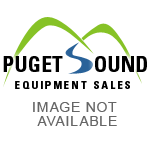
Keeping financial losses to a minimum after water damage occurs to your property requires a thorough approach that addresses the issues of excessive indoor humidity, wet structural and building materials, and the possibility of mold remediation. Contacting an experienced contractor who has the tools and experience to ensure problems are rectified in a timely manner is essential for most people, but homeowners who want to start the rebuilding process on their own immediately after a storm should be certain that they keep the following things in mind.
Locate and Note the Problem Areas
Depending on the reasons behind damages, property owners often rely on experienced help to remedy leaky roofs, repair damaged plumbing, or prevent flooded basements from recurring. When a building is swamped after excessive rains, owners may need to change the elevation in their exterior wall lines or seal lower levels to prevent water from entering. When a roof no longer functions properly, the repair may be as simple as replacing a few damaged shingles or fixing the flashing.
Minimizing and Mitigating Damage
After severe water damage has occurred, some structural pieces that bear the building’s weight or take care of typical home operations may have been compromised. If this is the case, replacement of the destroyed parts or areas may be in order. Wall studs may have been thoroughly soaked in the storm, which can be a serious problem, and your sump pump might be beyond repair. Lumber may still be functional if, after being properly dried, its density hasn’t been reduced. Since practically every building needs one, you can also find fairly priced sump pumps for sale with relative ease. The important thing is to try and salvage what you can, and replace what you can’t.
Getting the Mold Out
When moisture is allowed to sit for days on end, dangerous molds begins to thrive. The organism’s perfect living environment is inside damp walls, on drywall and inside insulation. Because mold releases toxic spores, it is imperative to dry the interior with equipment that is made for the job. While this equipment might be expensive to purchase, it can be rented for a fraction of the cost. Don’t waste money on a tool you may not need to use more than once.